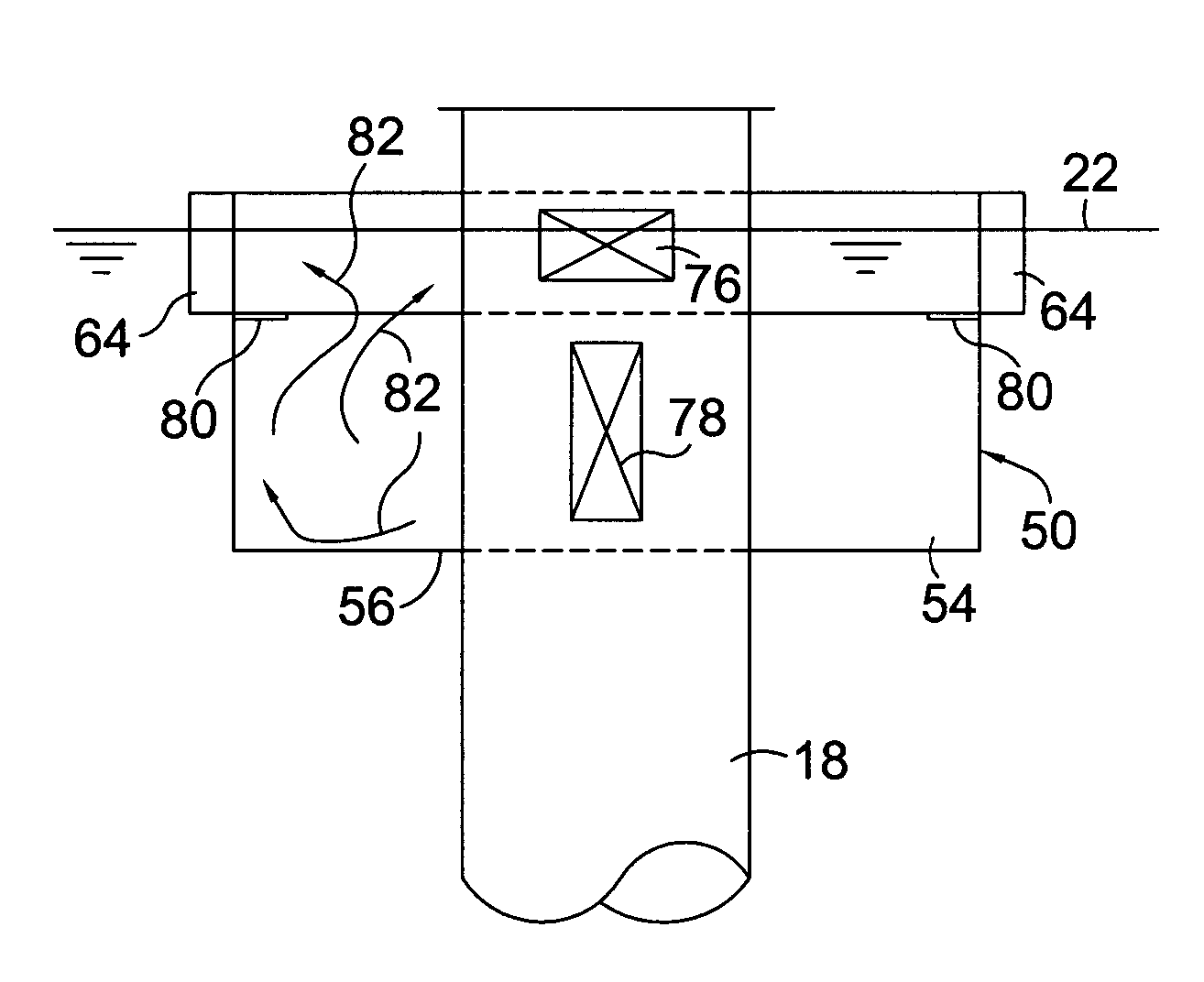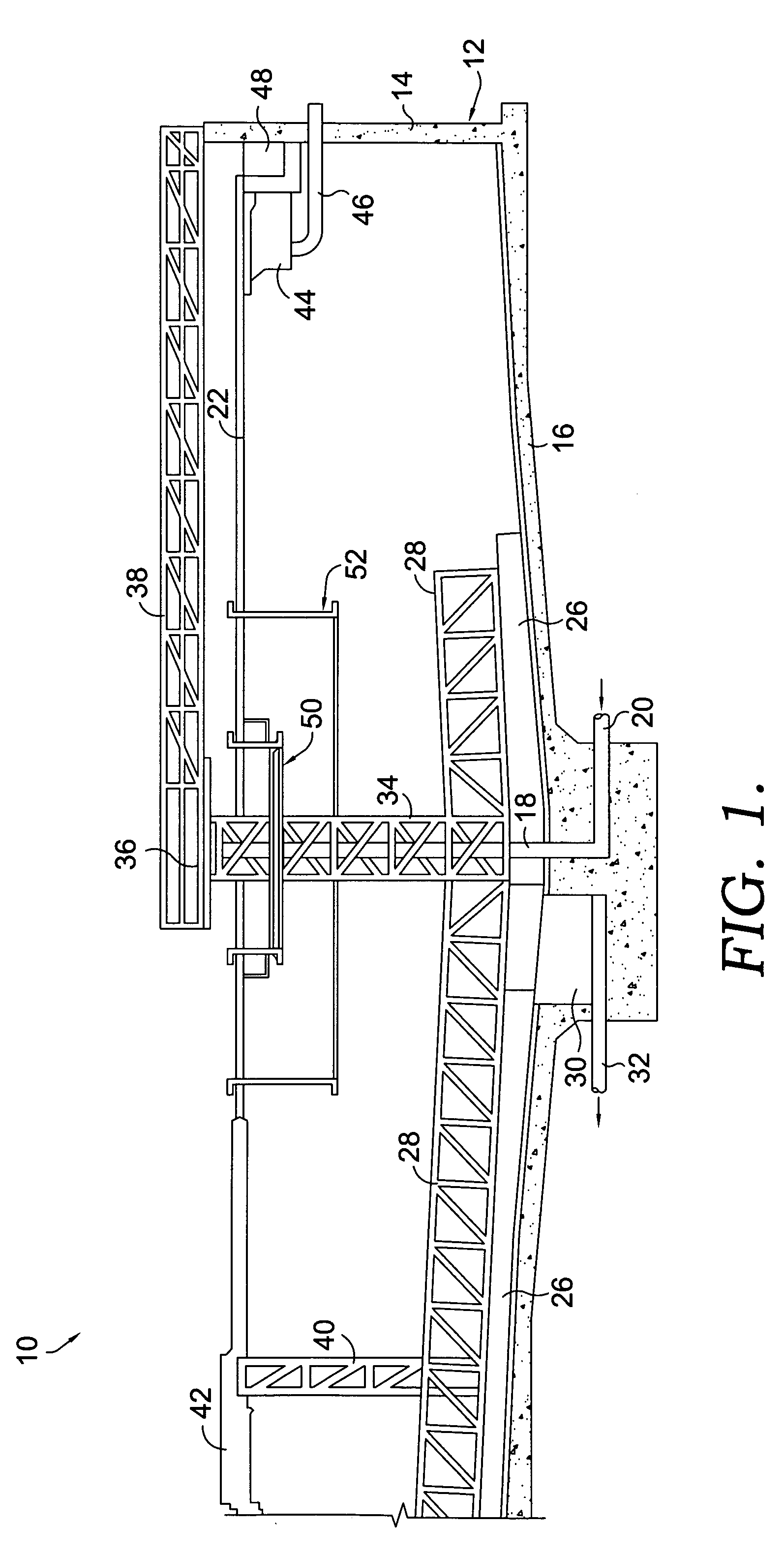Inlet structure for clarifiers
a clarifier and inlet structure technology, applied in the field of liquid clarification, can solve the problems of reducing efficiency and clarifier capacity, undesirable non-uniform radial flow, influent entering the feedwell, etc., and achieve the effect of improving clarifier efficiency and performance, and improving inlet structur
- Summary
- Abstract
- Description
- Claims
- Application Information
AI Technical Summary
Benefits of technology
Problems solved by technology
Method used
Image
Examples
Embodiment Construction
[0027] Referring now to the drawings in more detail and initially to FIG. 1, numeral 10 generally designates a clarifier which may be constructed conventionally for the most part. The clarifier 10 includes a clarifier basin 12 which receives influent liquid that is to be treated by removing solids. The clarifier basin 12 has a cylindrical sidewall 14 and a floor 16 which slopes downwardly toward the center. A vertical influent column 18 extends upwardly along the axial center of the basin 12. The influent that is to be treated is supplied to the influent column through an inlet pipe 20 which may extend under the floor 16. Below the liquid level 22 in the basin 12, the influent column 18 is provided with a plurality of ports 24 (see FIG. 5) which discharge the influent from the column 18.
[0028] The clarifier 10 is equipped with a plurality of rakes or blades 26 that are carried on rotating rake arms 28. As the arms 28 rotate, the blades 26 rake sludge which settles on the clarifier ...
PUM
| Property | Measurement | Unit |
|---|---|---|
| angle | aaaaa | aaaaa |
| angle | aaaaa | aaaaa |
| angle | aaaaa | aaaaa |
Abstract
Description
Claims
Application Information
 Login to View More
Login to View More - R&D
- Intellectual Property
- Life Sciences
- Materials
- Tech Scout
- Unparalleled Data Quality
- Higher Quality Content
- 60% Fewer Hallucinations
Browse by: Latest US Patents, China's latest patents, Technical Efficacy Thesaurus, Application Domain, Technology Topic, Popular Technical Reports.
© 2025 PatSnap. All rights reserved.Legal|Privacy policy|Modern Slavery Act Transparency Statement|Sitemap|About US| Contact US: help@patsnap.com



